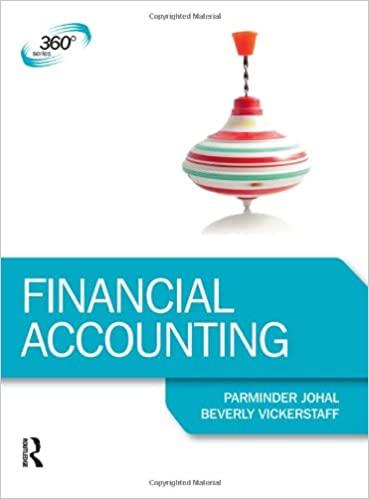Question
Allentown Credit Union (ACU) is located in a rural community in Canada. Membership is open to people in the community and the surrounding area. The
Allentown Credit Union (ACU) is located in a rural community in Canada. Membership is open to people in the community and the surrounding area. The local economy, which is predominantly agricultural, has been harmed by droughts in recent years and by declines in commodity prices, leading to a decline in ACU's profitability.
ACU has always had an external audit and has always prepared its financial statements in accordance with International Financial Reporting Standards. Ellino & Co. has audited ACU for the last several years. You, CPA, a senior with Ellino & Co., have been appointed to the audit of ACU for the year ended December 31, 2022. It is now early January 2023, and you are at the client's premises reviewing the information gathered to date.
ACU was founded in 1942, and it has always maintained a philosophy of serving the community. This has resulted in liberal lending practices and investment in the local community whenever possible. This stance has distinguished it from other financial institutions, which are primarily branches of national banks, and has given ACU a 75% share of the market.
ACU has been headed by the general manager, Ted Richards, for the past ten years. Ted reports directly to the Board of Directors, which is comprised of local people, some of whom have no formal financial training. Ted has always been accessible to members of the credit union and, on occasion, he has intervened in favour of the customer over the staff. He maintains that this flexibility is crucial to generating revenue, which is an important objective of the Board.
The loan manager, Sheila Meigs, joined ACU in the past year. She is responsible for the entire lending function, which includes authorization of loans, appraisal of collateral, and assessment of the collectibility of outstanding loans. The loan portfolio is the largest asset on the balance sheet, representing 75% of total assets.
The accountant, Vivian Larson, and the head teller, Joanne Blake, both have 15 years of experience at ACU. Both are married to farmers and work to supplement their income. Both families are members of ACU, and all their personal and business transactions are conducted through the credit union.
As you read through your notes, Ted Richards interrupts you to tell you about some of the events that have occurred at ACU during the year.
ACU foreclosed on a large loan and sold the land held as collateral. One effect of this sale was to depress the land prices in the surrounding area. ACU still maintains a high inventory of land received from past foreclosures but has decided to hold onto this land for fear of depressing land prices further.
As a result of the depressed state of the local economy, provisions have recently been made to allow some customers to repay their loans with grains (i.e., oats and barley) instead of cash. Although such payments are not a common practice, Ted has approved these transactions on an exception basis.
Even though the economy is depressed, Ted believes this will turn around and loans will be collected over the long term. Therefore, he has instructed to Sheila Meigs, Loan Manager, not to write off any significant loans as loan balances.
Required:
a) Define inherent risk and perform an inherent risk assessment for ACU. (identify each inherent risk and clearly describe it.
b) Perform a control risk assessment (with control risk conclusion)
c) Conclude on the overall risk of material misstatement (consider the users of the financial statement as well as key assertions). (identify RMM as High, Medium or Low, and each user of the financial statement identified along with how they would use the financial statement and assertion of relevance to them - UP to TWO users)
d) How will your audit risk conclusion impact the audit strategy? (discuss Detection Risk and overall strategy - substantive vs control based approach)
e) Pick 1-2 of the assertions and related accounts you identified in part C. Design an audit procedure to test the assertion. (each procedure should be provided).
Step by Step Solution
There are 3 Steps involved in it
Step: 1

Get Instant Access to Expert-Tailored Solutions
See step-by-step solutions with expert insights and AI powered tools for academic success
Step: 2

Step: 3

Ace Your Homework with AI
Get the answers you need in no time with our AI-driven, step-by-step assistance
Get Started


